Fingering The Male G-Spot: 10 Things You Need To Know About it

About the G-spot – Elusive? Yes. Existent? Definitely. Two of the top questions I get asked as a sex
educator are: “Does the G-spot really exit?” “How do I find my G-spot?” YES, it does exist. You just have to know how to find it! Keep in mind that everyone is different, and not one body is built the same way because each of us have sensitive nerve endings in different places.
The G-spot, or Gräfenberg Spot (named after the German gynecologist who first “discovered” it), is a bean shaped area (a system of glands & ducts) inside the vagina toward the vaginal wall (picture the location of your belly button). However, when aroused it can become the size of a walnut.
What IS The G-spot, Actually?
It’s an area of spongy erectile tissue that surrounds the urethra.
What Does It Feel Like?
When the G-spot is aroused, it feels bumpy and is rougher than the rest of the vaginal wall. Why? The G-spot is composed of erectile tissue, which means it swells up when blood rushes to it.
Let’s try an experiment: Take your tongue and touch the roof of your mouth. How does that feel? Does it feel bumpy? Your G-spot will also feel bumpy — like the roof of your mouth— when it is aroused.;
#2. KAGGA KAMMA – CEDERBERG, SOUTH AFRICA
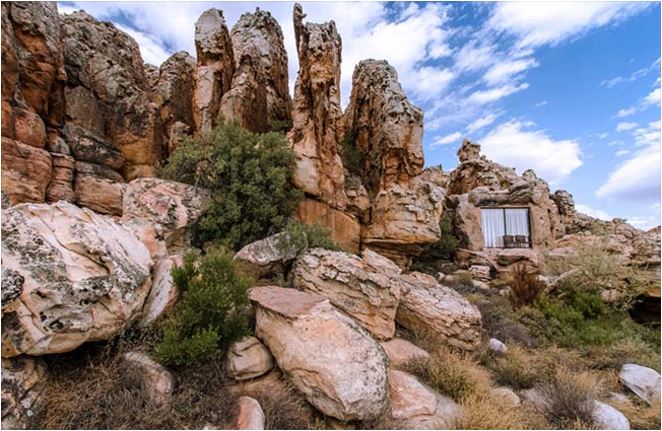
The Kagga Kamma building is an Iconic hotel in Cederberg, South Africa. It contains rooms which are built to blend with the natural environment, merge seamlessly to the rocks.
The natural appearance of the building is really astonishing and will completely bury you into nature with its structures. Although the buildings are not real cave rooms but will give you a lovely fantasy.
#3. LALIBELA – ETHIOPIA
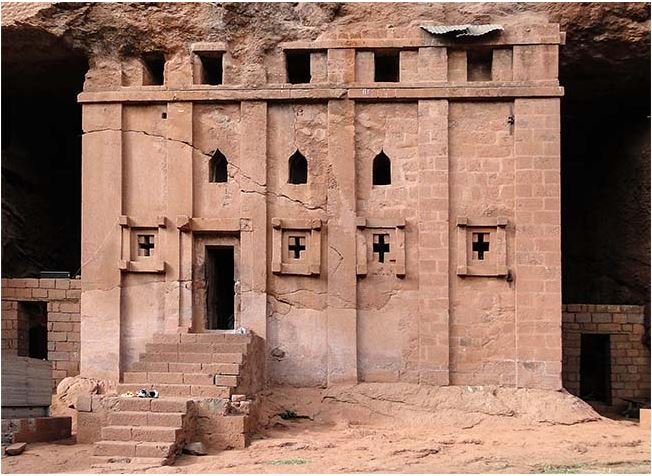
Lalibela is a wide structured temple area which contains 11 churches. It is clearly seen that the building is a freaky one but what makes it strange is that they are hewn straight into the rocks of Lalibela rather than it been on top of the ground.
The Rock-Hewn Churches were declared a UNESCO World Heritage Site in 1978. They are unique and extraordinary in the world.;
#6. NABEMBA TOWER – BRAZZAVILLE, CONGO
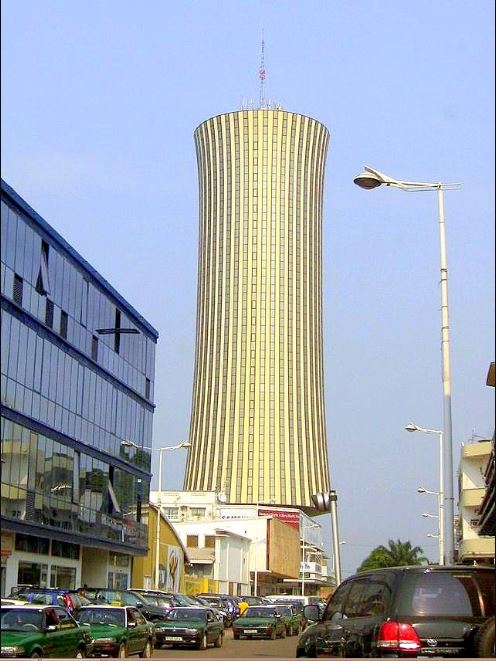
The Nabemba Tower, also known as Elf Tower, is an office skyscraper in Brazzaville, Republic of the Congo, located directly on the Congo River in the south of the city. The building is measured 186 meters with 50 floors, it is the tallest building in the Republic of the Congo.
The tower was designed by Jean Marie Legrand during the government’s five-year plan and was built between 1983 and 1986. It is named after Mont Nabemba, the highest mountain in the country.
#7. BASILICA OF OUR LADY OF PEACE – YAMOUSSOUKRO, COTE D’IVOIRE
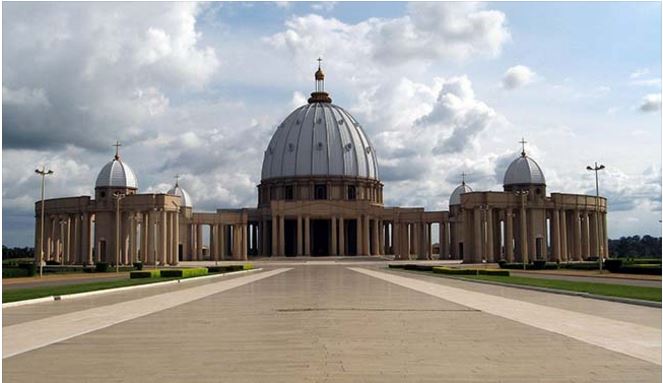
The Basilica of Our Lady of Peace is a Catholic minor basilica dedicated to Our Lady of Peace in Yamoussoukro, the capital of Côte d’Ivoire. The designs of the dome and encircled plaza are clearly inspired by the Basilica of Saint Peter in Vatican City, although it is not an outright replica. It can accommodate 18,000 worshippers.
The basilica was constructed between 1985 and 1989 by Dumez, the French construction company. Guinness World Records lists it as the largest “church” in the world, having surpassed the previous record holder, St. Peter’s Basilica, upon completion. It has an area of 30,000 square meters (320,000 sq ft) and is 158 meters (518 ft) high.;;
#8. CENTRE INTERNATIONAL DES CIVILIZATIONS BANTU(CICIBA) – LIBREVILLE, GABON
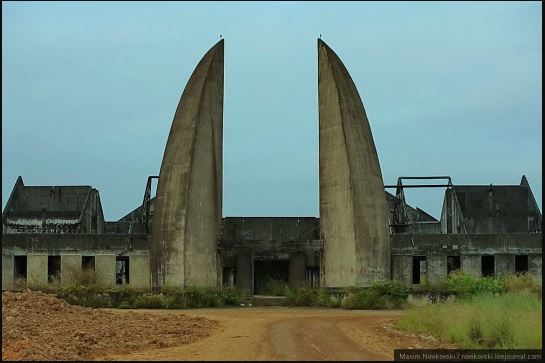
The Centre International des Civilisations Bantu (CICIBA) is a cultural organization based in Libreville, Gabon. Established at the initiative of Gabonese president Omar Bongo on January 8, 1983.
It is the world’s primary organization dedicated to the study of the Bantu peoples. In 2012, it was announced that the center would be rehabilitated after its abandonment in 1988 for lack of funding.
#9. GREAT MOSQUE OF DJENNE – DJENNE, MOPTI, MALI
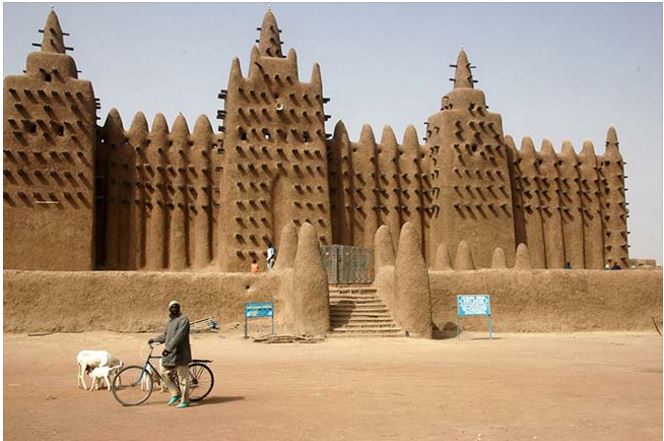
The Great Mosque of Djenné is a large Banco or adobe building that is considered by many architects to be one of the greatest achievements of the Sudano-Sahelian architectural style. The first mosque on the site was built in the 13th century, but the current structure dates from 1907.
The mosque is located in the city of Djenné, Mali, on the flood plain of the Bani River. It has been the center of the community of Djenné, it is one of the most famous landmarks in Africa. Along with the “Old Towns of Djenné,” it was designated a World Heritage Site by UNESCO in 1988.;
#10. BCEAO TOWER – BAMAKO, MALI
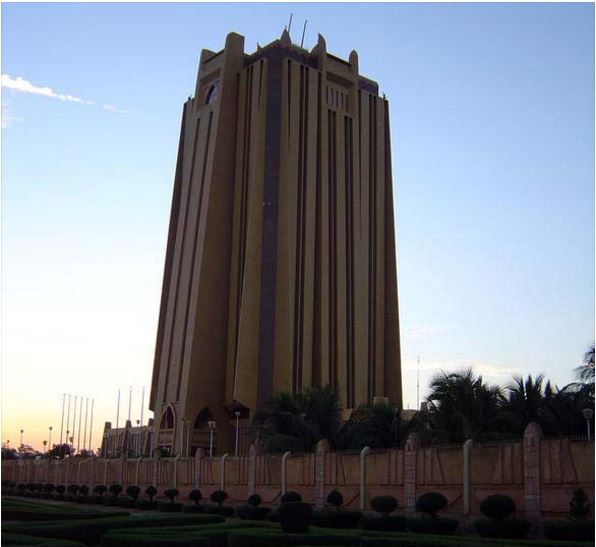
BCEAO Tower in Bamako, Mali is the tallest building in the West African with 20 stories in it. It is the Malian headquarters of the Central Bank of the West African States, which provides development banking and government financial and currency services in several Francophone West African nations.
The tower is modeled on the Sudano-Sahelian architecture of the famous Mosques of Djennéand Timbuktu. The building, dull orange in color, matches the traditional Banco architecture of West Africa, as well as that of the soil in the surrounding area. Its tapered shape resembles a termite hill from a distance and its distinctive “horns” on the building’s top, and its deeply incised, vertically variegated facade are typical decorative elements of Sahelian architecture.;
Comments
Post a Comment